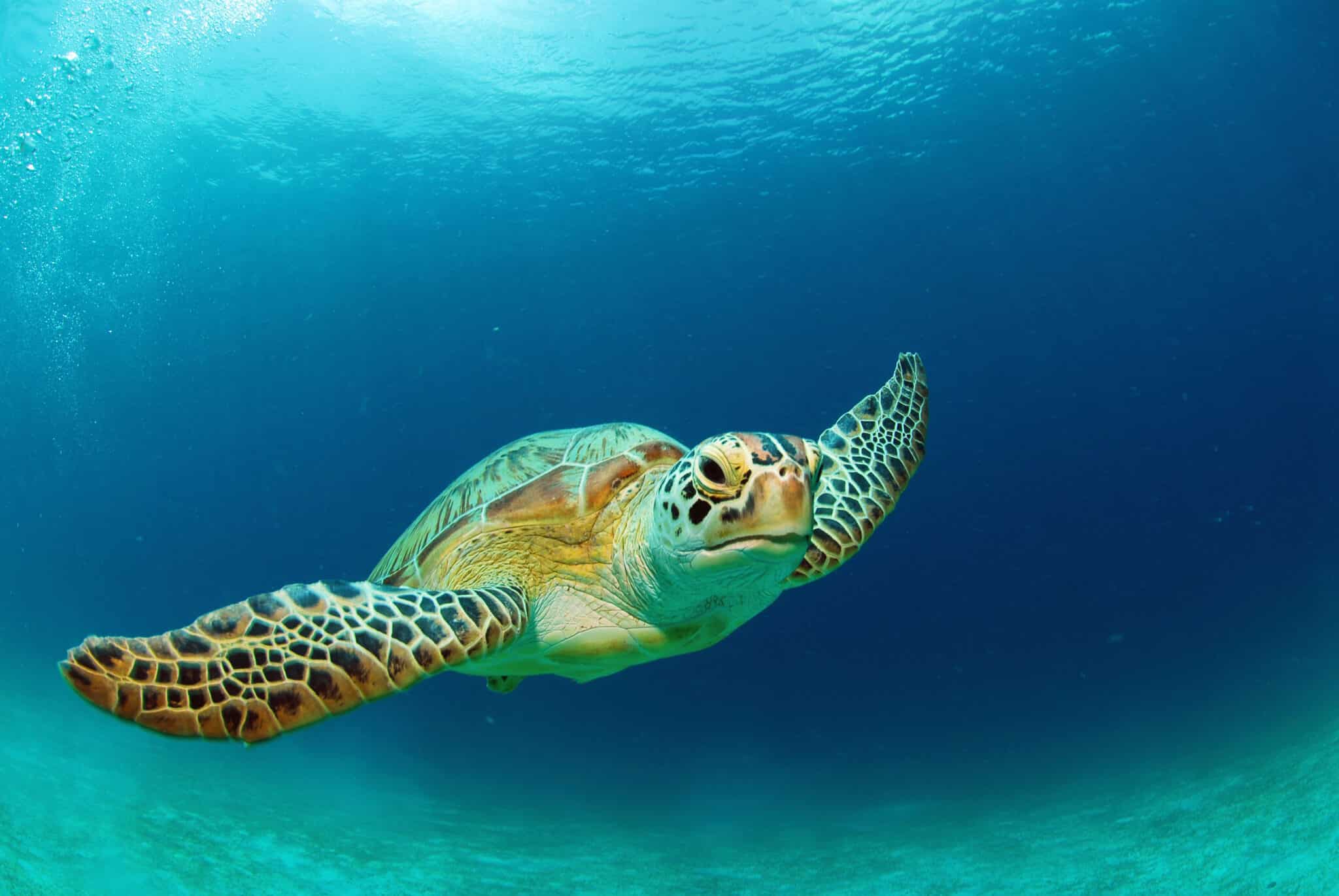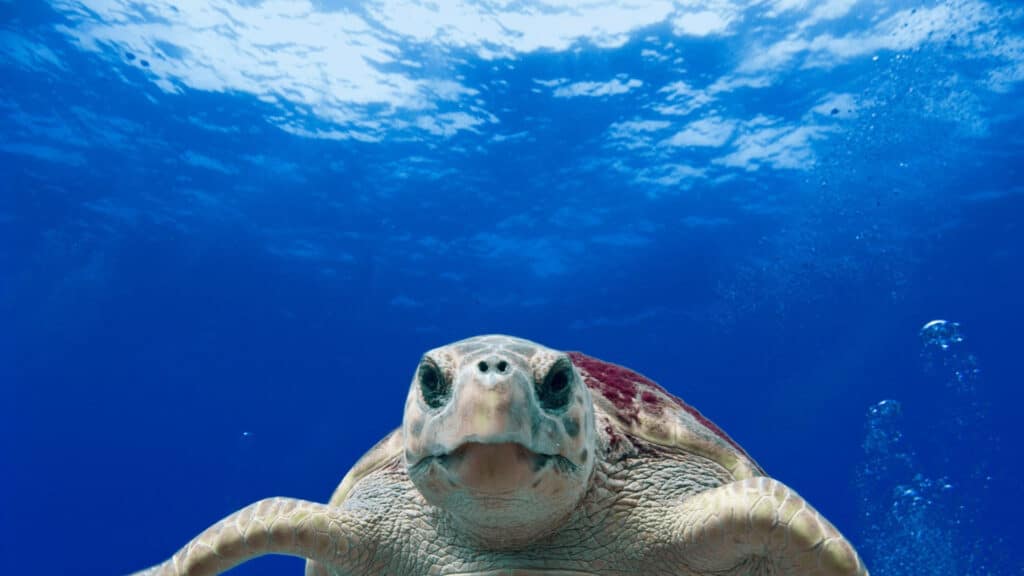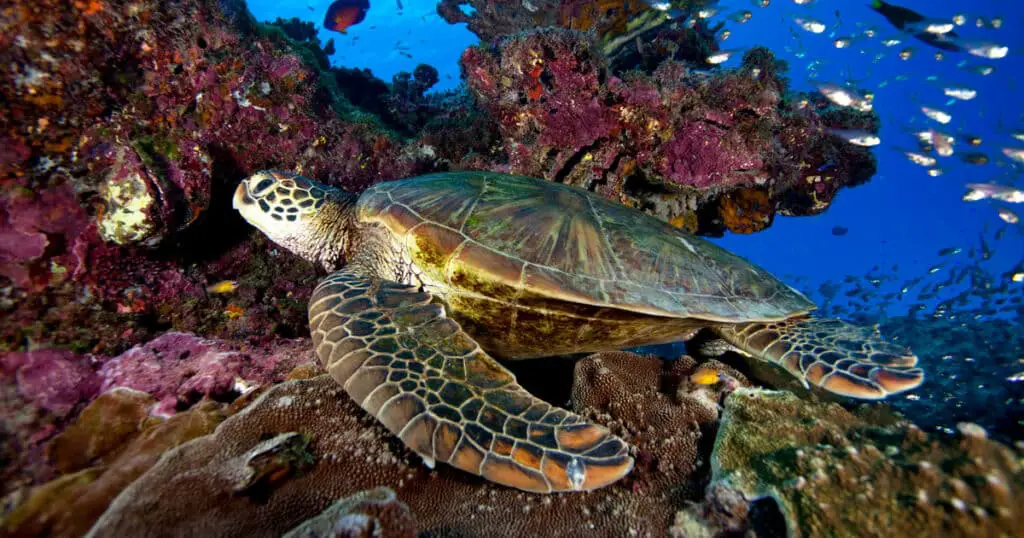How Long Can Sea Turtles Hold Their Breath

lizenzfrei o.digi f.35.mm
Introduction
How Long Can Sea Turtles Hold Their Breath: Sea turtles, these ancient and enigmatic creatures of the ocean, have fascinated humans for centuries. Their graceful movements through the water and their unique life cycles have captured the imaginations of marine biologists, conservationists, and nature enthusiasts alike. One of the most astonishing aspects of their existence is their remarkable ability to hold their breath for extended periods underwater.
In the world beneath the waves, where survival often hinges on adaptations to an environment devoid of oxygen, sea turtles have evolved an extraordinary talent for breath-holding. Their capacity to remain submerged for extended durations is a key factor in their ability to forage for food, escape predators, and traverse vast oceanic distances.
This exploration delves into the fascinating world of sea turtles and their incredible adaptation to an aquatic life, shedding light on the mechanics, adaptations, and mysteries of just how long these remarkable creatures can hold their breath beneath the ocean’s surface. Join us on this journey to unravel the secrets of sea turtle survival in the depths of the sea.

How long can turtle breathe underwater?
Sea turtles can hold their breath for several hours, depending on their level of activity. If they are sleeping, they can remain underwater for several hours. In cold water during winter, when they are effectively hibernating, they can hold their breath for up to 7 hours.
Turtles, including sea turtles, have an impressive ability to hold their breath underwater, allowing them to navigate and thrive in aquatic environments. The exact duration that a turtle can remain submerged varies among species and individual turtles, but it’s a vital adaptation for their survival.
In general, turtles are adapted for prolonged breath-holding. They achieve this through several mechanisms. First, they possess well-developed lungs that allow for efficient oxygen exchange. Additionally, they can slow down their metabolic rate while submerged, reducing the amount of oxygen their bodies require. Some turtles, like sea turtles, can also store a small amount of oxygen in specialized body tissues and even in their bones, further extending their underwater endurance.
Sea turtles, for example, can hold their breath for surprisingly long periods, with some species capable of staying submerged for several hours. However, the specific duration can vary based on factors like activity level, water temperature, and individual health. These remarkable adaptations not only enable turtles to forage for food and evade predators but also play a critical role in their life cycles, including nesting and migration. Overall, a turtle’s ability to breathe underwater is a fascinating aspect of their biology that showcases their incredible adaptability to aquatic environments.
Do sea turtles sleep underwater?
Sea turtles have been known to hold their breath for 4 to 7 hours when sleeping. They can sleep underwater for 4 to 7 hours at a time. While hatchlings sleep by lying on the surface of the water, subadults and adults sleep in deep water. In nearshore waters, they also do sleep on the sea bed wedged under rocks.
Sea turtles do sleep underwater, but their sleeping behavior is quite different from that of humans or other land-dwelling animals. Sea turtles are adapted to a life in the ocean, and they must remain vigilant even when they’re resting. This adaptation is necessary to avoid potential threats from predators and to fulfill their basic physiological needs.
Sea turtles exhibit a behavior known as “resting” rather than conventional sleep. During these resting periods, sea turtles can remain submerged for several hours, depending on the species. While resting, they enter a state of reduced activity and metabolism, allowing them to conserve energy. They often find a safe spot, like a crevice in a reef or a calm area with minimal current, to minimize the risk of drifting.
Even during this resting state, sea turtles must periodically swim to the surface to breathe. Unlike humans, they can’t breathe underwater and need access to the air above the surface. So, sea turtles take short, frequent trips to the surface to take a breath and then return to their resting position underwater.
This unique behavior of resting underwater allows sea turtles to balance the need for rest with their need for oxygen and protection. It’s a fascinating adaptation that reflects the challenges and adaptations these incredible creatures have evolved to survive in their oceanic habitats.
How do sea turtles hold their breath for so long?
Large powerful lungs – Sea turtles have large lungs relative to their body mass. This allows them to store more air in their lungs. This allows them to hold their breath longer than other reptiles. Cloacal respiration – This is the ability of the sea turtle to respire through its cloaca.
Sea turtles possess a remarkable ability to hold their breath for extended periods underwater, a crucial adaptation for their life in the oceans. Several key physiological and behavioral mechanisms enable them to achieve this feat.
- Efficient Oxygen Utilization: Sea turtles have well-developed lungs that allow for efficient oxygen exchange. When they take a breath at the surface, they maximize the amount of oxygen absorbed into their bloodstream.
- Reduced Metabolic Rate: Sea turtles can slow down their metabolic rate while submerged. This means they require less oxygen to sustain their bodily functions, conserving their oxygen supply.
- Oxygen Storage: Some sea turtles can store oxygen in specialized tissues, like muscles and the liver. They can also store oxygen in their bones. This stored oxygen can be utilized when they are underwater, extending their breath-holding capacity.
- Anaerobic Respiration: In addition to using stored oxygen, sea turtles can also engage in anaerobic respiration, a process that generates energy without oxygen for short periods. This helps them endure brief oxygen deficits.
- Behavioral Adaptations: Sea turtles often rest in areas with minimal water movement or currents, reducing the effort needed to stay in one place. They surface periodically to take quick breaths and then return to their resting position.
These adaptations, combined with their streamlined bodies and slow movements when underwater, allow sea turtles to hold their breath for varying durations, depending on the species and individual factors. Some sea turtles can remain submerged for several hours, making them well-suited to their oceanic lifestyles and the challenges of foraging, evading predators, and undertaking long migrations beneath the waves.
How long can a green sea turtle hold its breath?
Green turtles can hold their breath underwater for as long as five hours. To do this, they slow their heart rate to up to nine minutes in between heart beats to conserve oxygen!
Green sea turtles, like other sea turtle species, have remarkable breath-holding abilities that enable them to thrive in their aquatic habitats. On average, a green sea turtle can hold its breath for about 4 to 5 minutes during routine activities such as foraging and swimming. However, they are capable of longer dives when necessary.
In certain situations, green sea turtles have been known to hold their breath for up to 5 hours or more. These extended dives typically occur during activities like resting, sleeping, or when they are in a low-energy state. During these periods, green sea turtles can reduce their metabolic rate significantly, allowing them to conserve oxygen and extend their time underwater.
The exact duration of a green sea turtle’s breath-holding capacity can vary depending on several factors, including the turtle’s age, size, health, and environmental conditions like water temperature and oxygen levels. Additionally, individual turtles may have some variability in their abilities.
The remarkable breath-holding capabilities of green sea turtles not only aid them in finding food and escaping predators but also play a crucial role in their survival and ability to carry out essential activities in their marine environments.
Do sea turtles smell underwater?
Smell. Most researchers believe that sea turtles have an acute sense of smell in the water. Experiments show that hatchlings react to the scent of shrimp. This adaptation helps sea turtles to locate food in murky water.
Sea turtles do have the ability to detect and perceive odors underwater, although their sense of smell is not as developed as some other marine animals. Sea turtles primarily rely on their sense of smell for various essential activities in their oceanic lives.
The main organ responsible for their sense of smell is the olfactory system, which consists of specialized cells located in the nasal passages. These cells can detect chemical compounds dissolved in the water, allowing sea turtles to identify scents associated with food, mating, or even potential threats.
While their sense of smell is functional underwater, it’s not as acute as that of some other marine animals, such as sharks or certain fish. Nonetheless, it plays a vital role in helping sea turtles locate their preferred food sources, such as seagrasses, algae, and jellyfish. It also aids in navigation during long migrations and in recognizing the scent of nesting beaches when it’s time for females to lay their eggs.
Sea turtles do possess the ability to smell underwater, and this sense is an important tool that assists them in various aspects of their survival, reproduction, and daily activities in the marine environment.
Do all sea turtle species have the same breath-holding capabilities?
While all sea turtles share some common adaptations that enable them to hold their breath for extended periods, there are differences based on their size, physiology, and behavior.
- Size Matters: Larger sea turtle species tend to have longer breath-holding abilities than smaller ones. For example, leatherback sea turtles, which are the largest of all sea turtles, can often hold their breath for more extended periods compared to smaller species like the loggerhead or hawksbill turtles.
- Physiological Variations: Each species may have specific physiological adaptations that influence their breath-holding capacity. For instance, the leatherback turtle has unique adaptations, such as a more extensive respiratory system and a specialized circulatory system, allowing it to dive to greater depths and hold its breath for extended durations.
- Behavioral Differences: The behavior of different sea turtle species also influences their breath-holding capabilities. Some turtles, like the green sea turtle, may engage in longer dives during periods of rest or sleep, while others may need to surface more frequently during active foraging or swimming.
- Environmental Factors: Environmental conditions, such as water temperature and oxygen levels, can impact a sea turtle’s ability to hold its breath. Colder water temperatures may slow metabolic rates and extend breath-holding times, while low oxygen levels can shorten them.
Sea turtle species exhibit variations in their breath-holding capabilities due to a combination of factors, including size, physiology, behavior, and environmental conditions. These adaptations allow each species to thrive in its specific niche within the marine ecosystem.
Are there any conservation concerns related to sea turtle diving behavior?
Sea turtle diving behavior is indeed a subject of significant conservation concern. These magnificent marine creatures, including species like the loggerhead, green, and leatherback turtles, exhibit unique diving behaviors that are crucial to their survival, but which also make them vulnerable to various threats.
One primary concern is the impact of human activities on sea turtles’ natural diving patterns. The introduction of fishing gear, such as gillnets and longlines, poses a serious threat as turtles can become entangled while foraging underwater. This often leads to injury or drowning, contributing to declining sea turtle populations worldwide.
Additionally, habitat destruction and pollution further disrupt sea turtle diving behavior. Coastal development can lead to light pollution, disorienting hatchlings and discouraging nesting females. Pollution from plastics and chemicals can contaminate their feeding grounds, affecting their food sources and, consequently, their diving behavior.
Climate change, with rising sea temperatures and altered ocean currents, also affects the availability and distribution of prey, influencing the diving patterns of sea turtles.
Conservation efforts aim to address these concerns through measures like protected marine areas, turtle-friendly fishing practices, and education campaigns to reduce pollution. By understanding and protecting sea turtle diving behavior, we can contribute to the survival of these ancient creatures and the health of our oceans.
Do sea turtles breathe air like humans do?
Sea turtles, like humans, are air-breathing creatures. They possess lungs and must surface regularly to breathe. Unlike fish, which extract oxygen from water using gills, sea turtles rely on their lungs to respire. This fundamental similarity to humans underscores their ancient evolutionary lineage. When a sea turtle surfaces, it extends its head above the water, allowing it to draw in air through its nostrils.
Remarkably, some species can hold their breath for extended periods. The leatherback sea turtle, for instance, has been known to remain submerged for up to 85 minutes. Such adaptations allow them to navigate vast oceanic distances, reaching remote feeding and nesting grounds.
This reliance on the interface between air and water renders sea turtles vulnerable to certain human activities. Pollution, particularly plastic waste, poses a significant threat. Discarded plastic debris can be mistaken for food, leading to ingestion and potentially fatal consequences. Additionally, underwater noise pollution and habitat destruction disrupt their ability to surface freely, impacting their survival.
Understanding the respiratory needs of sea turtles not only deepens our appreciation for these ancient creatures but also emphasizes our collective responsibility to protect their fragile habitats. It underscores the critical importance of conservation efforts to ensure the continued existence of these remarkable beings in our oceans.

Conclusion
In the depths of the ocean, sea turtles exhibit a remarkable feat of adaptation: their ability to hold their breath for extended periods. As we’ve ventured into the world of these ancient marine creatures, we’ve uncovered the secrets behind their impressive breath-holding capabilities.
Through a combination of physiological adaptations, such as increased lung capacity, efficient oxygen utilization, and slowed metabolic rates, sea turtles have evolved to thrive in an environment where oxygen is a precious resource. This ability not only aids their survival but also facilitates essential activities like foraging, evading predators, and undertaking incredible migrations.
Our exploration has revealed that the duration a sea turtle can hold its breath varies among species, with some reaching astonishing lengths of over five hours. However, this remarkable talent is not without its limits, as turtles must resurface periodically to replenish their oxygen supply.
Understanding the intricacies of sea turtles’ breath-holding abilities is not just a matter of scientific curiosity; it holds significant conservation implications. With ongoing threats like habitat loss, pollution, and climate change, preserving the habitats and behaviors of these ancient mariners is crucial for their survival.
Sea turtles’ breath-holding capabilities are a testament to the wonders of evolution and adaptation in the natural world. Through continued research and conservation efforts, we can hope to ensure that these awe-inspiring creatures continue to grace our oceans for generations to come.



